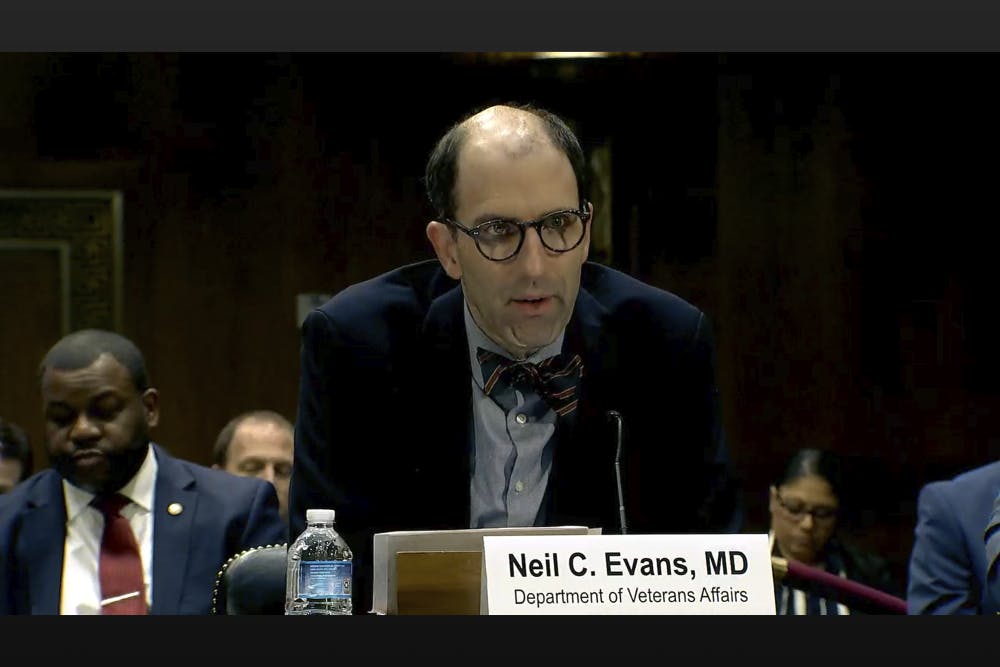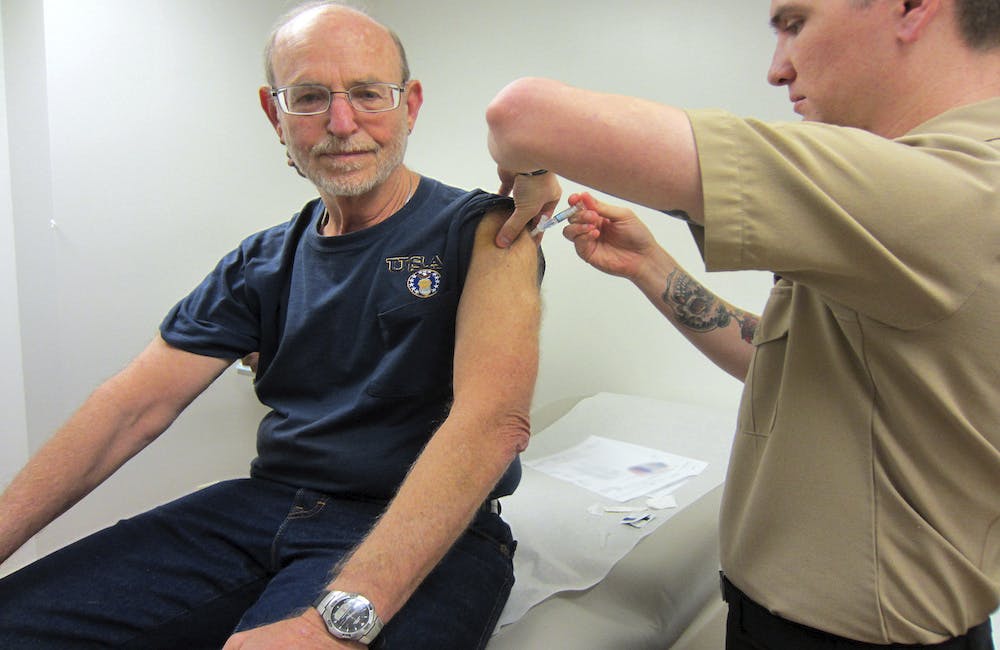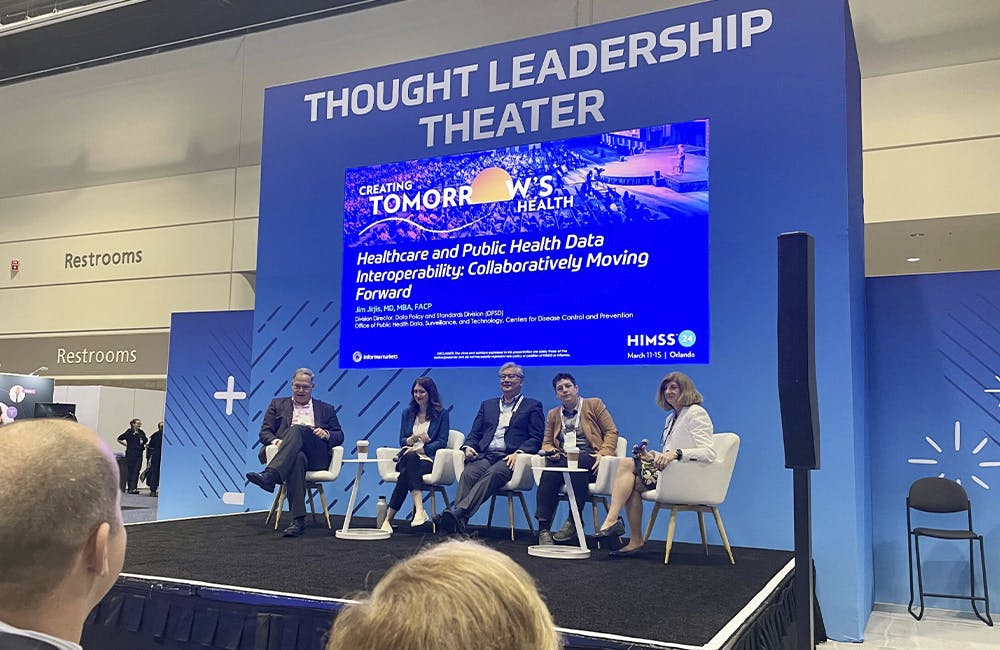What VA Needs Before EHR Rollout Resumes
The agency’s sprint report outlines findings that leadership is using to inform next steps of the electronic health record rollout.

The Department of Veterans Affairs’ Electronic Health Record Modernization (EHRM) Sprint Report highlighted various changes needed for the structure for decision-making, the processes for go-live decisions and other solutions that improve patient care.
The agency’s EHRM Sprint Project Team released the report earlier this month after an “assess and address” period while the entire EHR program was put on pause from October 2022 to June 2023. Agency leadership told lawmakers last week they are already putting plans in place to address the recommendations outlined in the report.
“These systems in many ways drive how health care is delivered, how work gets done, how patient care encounters are orchestrated, how communication and handoffs occur and how those patients and health care providers access the data that they need for decision-making and more. These systems are extremely complex, and they need to be highly reliable, available and performing at all times,” Dr. Neil Evans, acting program executive director for the Electronic Health Record Modernization Integration Office (EHRM-IO), said during a Senate Committee of Veterans Affairs hearing March 15.
The report recommended solutions to improve patient care, including improving accuracy, enterprise standardization and reliability of data collected for uploading to the new system; bolstering management of clinical and administrative order; and enhancing standardization of EHR naming conventions to ease cognitive burden and better support VA’s enterprise scale.
The report said that VA has addressed some of these challenges, but in other cases, the solutions may take months to put in place. Evans said during the hearing that last month’s system update included three critical pharmacy enhancements, with more on the way.
“We have addressed usability issues and enhanced training regarding order management in the system and more. In terms of system stability, this has also improved. As of this month, it’s been more than 200 days, or six months, without a complete outage. System incident free time, or the amount of time without users experiencing any disruption in their use of the system, isn’t yet at its goal, though it is moving in the right direction,” Evans said.
VA’s Undersecretary for Health Shereef Elnahal noted during the hearing that VA’s Walla Walla site recently reached pre-deployment productivity by implementing new workflow strategies.
“We are learning deeply from that experience, and we plan on having that experience be taught and shared in terms of those best practices, not only for sites going forward like Saginaw, but the sites that already have the system like Columbus,” Elnahal said.
VA is also developing an Enterprise Site Readiness Dashboard and related assessment methods to provide shared visibility of readiness from a program, technical and operational standpoint. The dashboard will support shared program management, enable earlier risk mitigation efforts and inform leadership decision-making regarding readiness for deployment efforts and go-lives.
Additionally, the Oracle Cerner contract to implement VA’s multibillion-dollar EHR modernization program is up for renewal on May 16. VA is currently negotiating the terms of the contract with the aim of improving the system’s functionality and effectiveness.
“There have been some challenges around system reliability and user adoption, and we’ve insisted for those improvements to be made by Cerner, and they’ve done some, but nearly not enough. And so one of the key items that we’re doing with instituting this is improving … the limited enforcement mechanisms of the May 2018 contract because it is very restrictive,” Michael Parrish, chief acquisition officer and principal executive director of VA’s Office of Acquisition, Logistics and Construction, said during the hearing.
VA plans to have the terms of the contract negotiated by the renewal date.
Leadership Changes
Since the beginning of the year, VA has seen major program leadership changes. Earlier this month, Deputy Secretary Donald Remy said he will step down from his position April 1. Guy Kiyokawa, VA’s assistant secretary for enterprise integration, will serve in an acting capacity following Remy’s departure.
Additionally, Terry Adirim departed the role Dr. Evans now helms, following his longstanding role as chief officer for the Office of Connected Care and senior advisor to the Assistant Secretary for Information and Technology and CIO at the agency.
“As the newest member of this team, having stepped into my current role three weeks ago, I greatly appreciate the opportunity that I will have to collaborate with these experts, for the teams that they lead, with our contracted partners in this effort, and most importantly the frontline VA staff, who will depend on a modernized electronic health record to provide high quality, responsive health care to the veterans that they serve,” Evans said at the hearing.
GAO Findings
Carol Harris, director of IT and cybersecurity at the Government Accountability Office, testified about GAO’s March 2023 report outlining the change management challenges of the agency’s EHR program.
GAO found VA was partially consistent with seven leading practices in organizational change management activities — including developing a vision for change, identifying and managing stakeholders, communicating effectively, assessing the readiness for change, identifying and addressing potential barriers to change, establishing targets and metrics for change and assessing the results of change. It was not consistent in one category: increasing workforce skills and competencies.
“Until the program fully implements the eight leading practices for change management, future deployments are at risk of continuing change management challenges. These challenges hinder effective use of the new EHR system, impede users’ knowledge of new workflows and limit the utility of system improvements,” the report said.
In addition to change management, Harris explained during the hearing that the agency should address the reported dissatisfaction from users of the EHR system and fully identify and address the system’s other issues.
“This critical evaluation performed by a third party would enable VA to systematically catalog report on and track resolution of assessment findings with greater rigor, transparency and accountability,” Harris said.
This is a carousel with manually rotating slides. Use Next and Previous buttons to navigate or jump to a slide with the slide dots
-

CDC Updates Public Health Data Strategy
Accelerating data sharing through capabilities like electronic case reporting make up a large portion of the new two-year plan.
3m read -

VA Kicks Off EHR Program at Joint Facility with DOD
The agency's Dr. Neil Evans briefed how the Oracle-Cerner program rollout in North Chicago is informing next steps in EHR modernization.
4m read -

Health Agencies Tout Standards in Data Sharing, Interoperability
Officials from CMS, ONC and HHS spoke about data standards and how to help smaller health organizations make modernization progress.
3m read -

VHA Preparing for AI, Interoperable Future
The agency is spearheading initiatives to expand health care to veterans, including emerging technology and electronic health records.
6m watch








